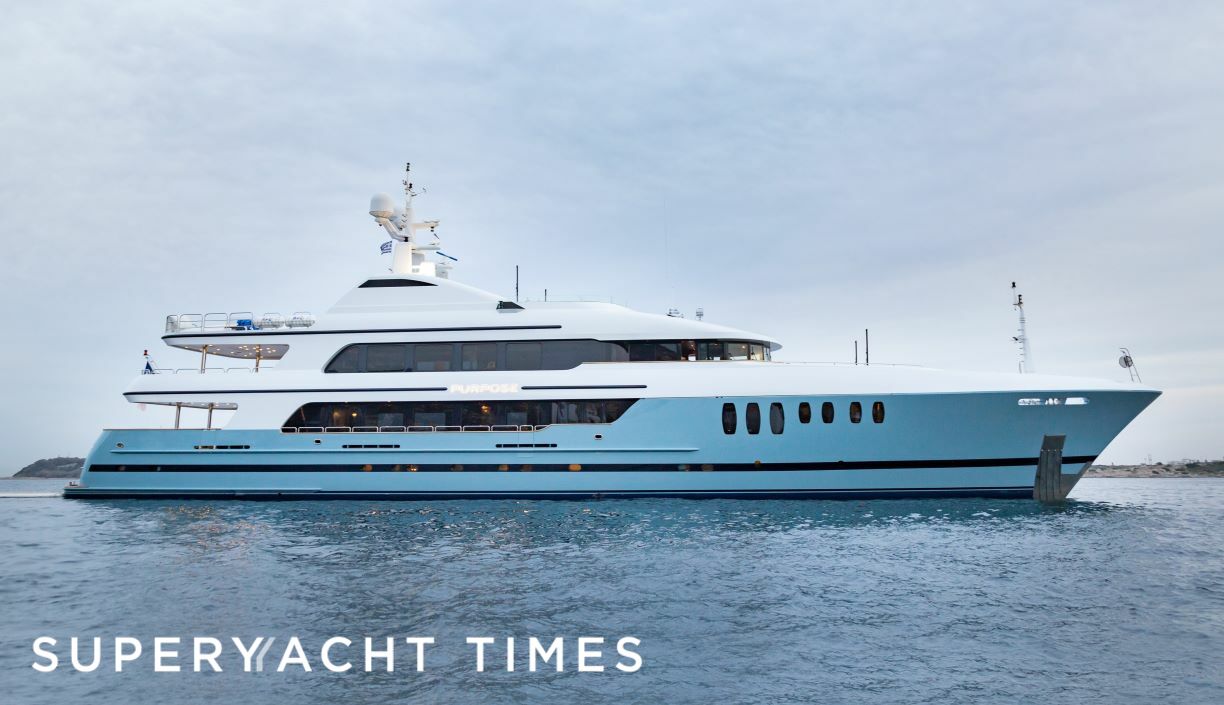The Red Sea, a vital maritime corridor linking the Mediterranean Sea and the Indian Ocean via the Suez Canal, has long been recognised for its strategic economic importance. Since October 2023, the security dynamics have dramatically shifted. The region's shipping lanes are increasingly compromised by activities linked to Iran and its affiliated non-state actors, such as proxy militias, reflecting a broader escalation in regional tensions.
By mid-March of this year, 34 vessels had reported damage from drone missile attacks. On 13 April 2024, a significant development occurred as international media reported that Iranian forces seized the container ship Aries in the Strait of Hormuz. This event was the second major seizure by Iranian forces this year, following the earlier capture of the tanker St. Nikolas by Iran's Navy in January 2024.
This article explores the profound impacts of the increased regional instability on the superyacht sector, examining its effects on cruising in the Red and Arabian Seas, as well as on the supply chain for yacht production and new-build projects.
How have the attacks in the Red and Arabian seas impacted superyacht cruising and transportation?:
Superyachts often navigate through the Red and Arabian Seas for three main reasons. First, the area is crucial for refit and maintenance due to high demand. Second, the growing number of marinas can accommodate an increasing fleet of superyachts, coupled by efforts to promote the Gulf region as a prime destination for superyacht cruising and luxury tourism. Third, it serves as a strategic transit point to the Indian Ocean, offering access to popular destinations in the Asia-Pacific region.


Consequently, many superyachts have opted for the route via South Africa’s Cape of Good Hope to reach Europe, minimising risk due to regional conflicts. Jan Maarten Boissevain from Sevenstar Yacht Transport, a company specialising in the global transportation of luxury yachts to the Gulf area, explained that there has been an increase in yachts being transported rather than navigating independently due to the conflict in the Gulf of Aden. He further notes that the traditional route through the Suez Canal and Gulf of Aden has been rerouted via South Africa, significantly lengthening transit times and elevating costs. Both Harris and Al Hashimi confirm this, stating that the detour around the Cape of Good Hope adds two to three weeks to travel times and increases costs by 30 to 35 percent.
Despite the growing preference for rerouting via the Cape of Good Hope, both Harris and Al Hashimi noted that some owners are reluctant to accept the delays and increased travel time associated with navigating around the Cape. These owners still aim to have their yachts in the Mediterranean in time for the summer season. Moreover, they are willing to pay increased war-risk premiums and offer additional incentives to captains and crews. “As long as conditions remain stable and reasonable, we are committed to supporting the vessels and their crews, ensuring their safety throughout the journey”, affirmed Harris.
When responding to the concern of piracy posing a serious threat to vessels cruising around South Africa, both Phoenix Yacht Management and Sevenstar Yacht Transport emphasised that the most significant piracy threat remains off the coast of Somalia, which still remains avoided through the route via the Cape of Good Hope. Additionally, they assured that standard safety measures are implemented for all their routings across worldwide regions.
Impact on the supply chain for superyacht production:
The Suez Canal serves as the shortest link between Asia and Europe. According to the International Monetary Fund (IMF), approximately 15 percent of global maritime trade volume typically passes through it. This route is crucial for the global supply chain involved in superyacht production, facilitating the transport of essential supplies for yacht building between the East and Europe. For instance, the majority of steel, an essential component in superyacht construction, is sourced from the East. Australia, a major producer of iron ore, sends this commodity to China for processing. The processed steel is then shipped to Europe via the Suez Canal. Moreover, significant components such as engines, generators, and electronics are transported from Europe to the East.
The IMF further notes that attacks on vessels in the Red Sea area have reduced traffic through the Suez Canal, extending delivery times by an average of 10 days or more. Additionally, this delay has posed challenges for companies that maintain limited inventories.
Exploring whether and how yacht builders have been influenced by this disruption, Costas Eliopoulos, Gulf Craft Group’s Production General Manager, explained that as a composite manufacturer, the company has not been significantly impacted. He states, "We primarily don't use steel or aluminium, although we do incorporate some components made from these materials. However, compared to manufacturers who predominantly use metal or aluminium, our usage is much lower. Thus, we are less affected by supply chain disruptions than those who depend more heavily on these metals."
While it appears that the regional instability has not significantly influenced superyacht production as initially feared, Eliopoulos identified a key logistical challenge: procuring paint, which unlike engines that do not have a shelf life and are imported from Europe through dealer networks, has limited shelf life and has been problematic. In response, Gulf Craft has adapted its strategy; instead of importing paint from Europe, they now source identical products directly from their networks in Asia via airfreight.
Future outlook:
The future of superyacht cruising and its associated supply chain is closely tied to regional stability, which currently shows no signs of improvement. Both Ian Harris and Yousuf Al Hashimi have highlighted a significant challenge: as summer approaches, rising seawater temperatures—which can drastically affect yacht engineering—compel many larger superyachts to consider leaving the area. Whether these superyachts will risk passing through the Suez Canal or opt for the safer, longer route around the Cape of Good Hope remains to be seen.



